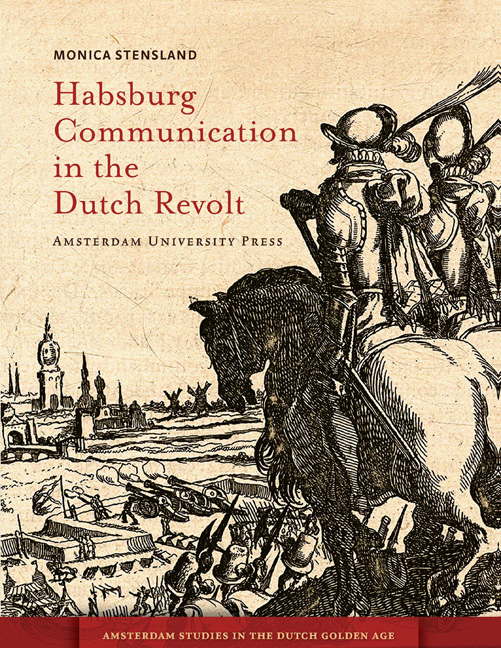Book contents
- Frontmatter
- Dedication
- Contents
- Acknowledgements
- List of Abbreviations
- Notes on References and Translations
- Introduction
- Rooting out Heresy and Rebellion, 1567-1572
- From Rebellion to War, 1572-1576
- The Breakdown of Royal Authority, 1576-1578
- Communicating Reconciliation, 1578-1585
- Losing the Peace, 1585-1595
- A New Beginning, 1596-1609
- Conclusion
- Notes
- Bibliography
- Illustration Credits
- Index
Communicating Reconciliation, 1578-1585
Published online by Cambridge University Press: 27 January 2021
- Frontmatter
- Dedication
- Contents
- Acknowledgements
- List of Abbreviations
- Notes on References and Translations
- Introduction
- Rooting out Heresy and Rebellion, 1567-1572
- From Rebellion to War, 1572-1576
- The Breakdown of Royal Authority, 1576-1578
- Communicating Reconciliation, 1578-1585
- Losing the Peace, 1585-1595
- A New Beginning, 1596-1609
- Conclusion
- Notes
- Bibliography
- Illustration Credits
- Index
Summary
‘I predict that the disagreements and the confusion prevailing among the States will be good,’ wrote Cardinal Granvelle to Alexander Farnese, the new governor-general of the Low Countries since Don John's death on 1 October 1578 and son of Margaret of Parma, the former governess. Granvelle was referring to the divisions between the different provinces of the Generality that had become more and more apparent during 1578. The Calvinist coups and the suggested Religionsvrede had profoundly antagonised the Catholic provinces, and in September a number of towns in Gelderland petitioned the States General that, in accordance with the Pacification of Ghent, there be no religious innovations. In mid-October, the States of Hainaut invited the province of Artois to join them in a union for the defence of the Catholic faith, and a couple of weeks later they requested that the Duke of Anjou, who had been called upon by the States General to support the Revolt, undertake their protection against the Protestant threat. The States of Artois, for its part, requested that the Generality take action to prevent the destruction of Catholic places of worship.
Both Granvelle and Farnese were hopeful about the chances of securing a reconciliation between the Catholic provinces and the regime as a result of these religious divisions. But they were also aware that the regime would have to demonstrate its own trustworthiness, as the discontented Catholic members of the Generality remained deeply suspicious of the king's intentions.
The continued importance of the Pacification
The attacks on Catholicism within the Generality in 1578 provoked the Walloon provinces to engage in pamphleteering for the first time. The States of Hainaut had reacted virulently and publicly to the proposed Religionsvrede in the summer of 1578, and based their opposition on the Pacification of Ghent which disallowed any assault on Catholic worship. The States of Artois also rejected the Religionsvrede and protested against the continuing iconoclasm and anti- Catholic measures.
Farnese was also confronted with the strong adherence to the Pacification of Ghent when he began making overtures to the Walloon provinces immediately upon his succession as governor. Although he had not yet received Philip's instructions, Farnese went ahead and proposed reconciliation to the Walloons on his own initiative.
- Type
- Chapter
- Information
- Habsburg Communication in the Dutch Revolt , pp. 89 - 114Publisher: Amsterdam University PressPrint publication year: 2012



